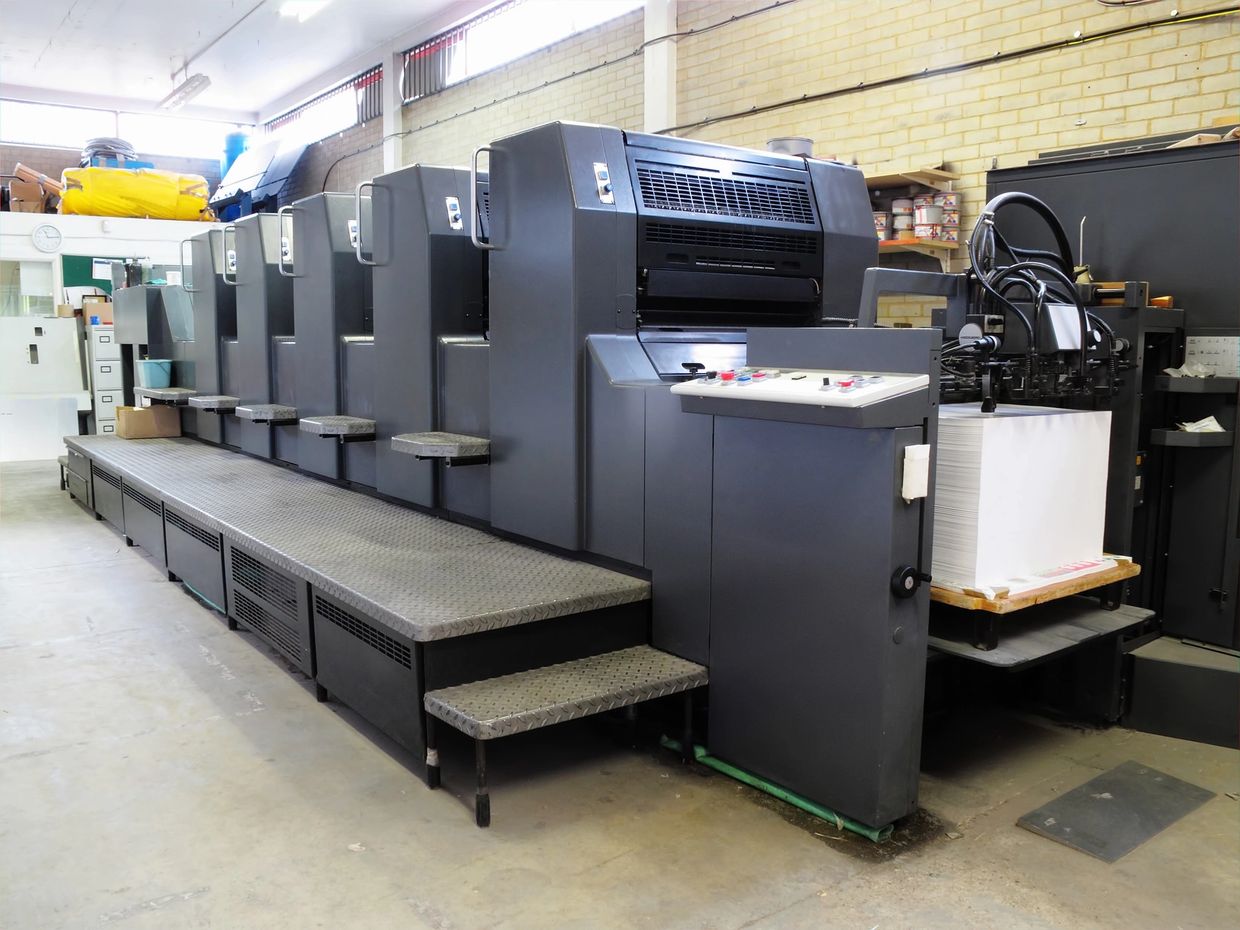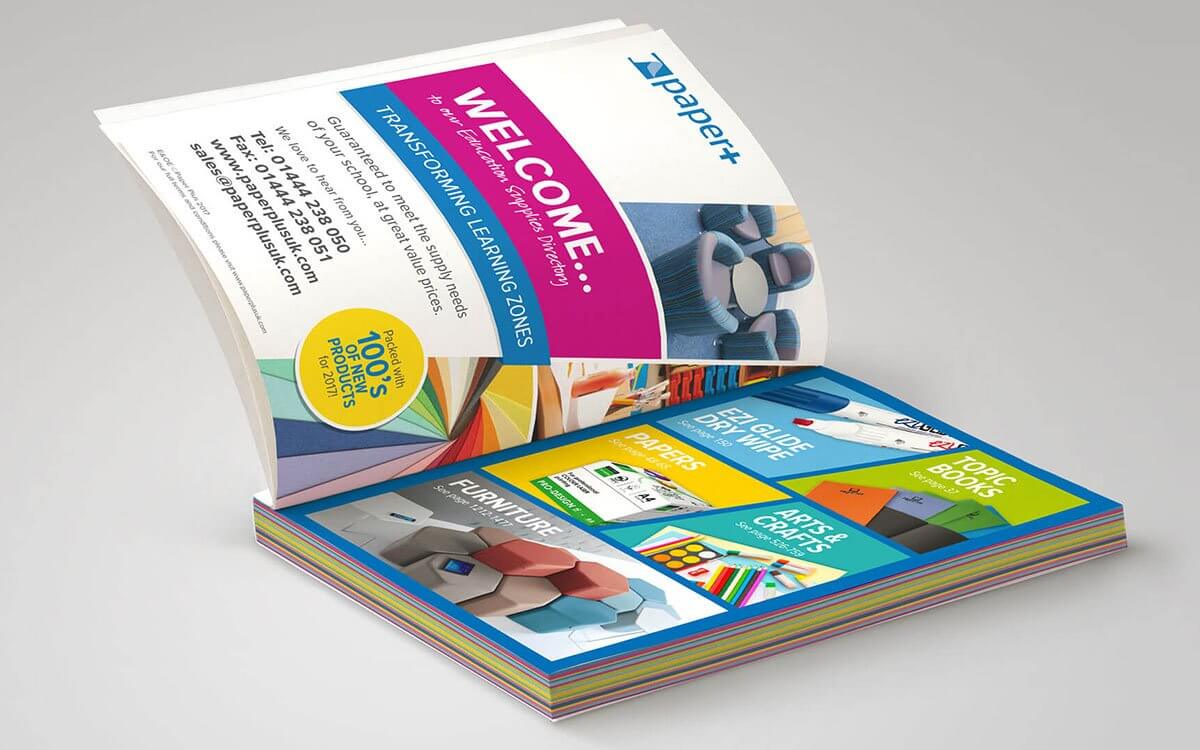The Crucial Overview to Recognizing Litho Printing and Its Applications
Litho printing stands as a significant technique in the printing sector, rooted in the concepts of oil and water repulsion. This technique not just delivers high-quality images however also accommodates numerous industrial needs. Its applications range from advertising and marketing materials to product packaging, showcasing its convenience. As the industry adapts to brand-new modern technologies, the evolution of litho printing elevates questions regarding its future and importance in an electronic landscape. What lies ahead for this enduring method?

What Is Litho Printing?
Litho printing, a commonly made use of printing technique, counts on the principle of oil and water repulsion. This approach utilizes a level printing surface, commonly a metal plate, which is treated to guarantee that the image areas are receptive to oil-based inks while the non-image locations repel them. The process begins with the development of a picture on home plate, typically through illustration or photo means. As soon as the photo is prepared, home plate is moistened with water, followed by the application of ink. The ink adheres only to the image locations, permitting accurate reproduction of graphics and message. Litho printing is preferred for its ability to produce top quality prints with fine detail and vivid shades. It is frequently used in industrial applications, consisting of newspapers, magazines, and packaging, showcasing its convenience and effectiveness in satisfying the demands of modern printing.
The Background of Lithography
Although lithography is a modern-day printing staple, its beginnings trace back to the late 18th century when German dramatist Alois Senefelder invented the technique in 1796. At first established as a technique for duplicating messages and pictures, lithography utilized a flat stone surface area to develop prints through a chemical procedure. Senefelder's development permitted better flexibility and creative expression contrasted to previous printing methods.By the 19th century, lithography obtained extensive acceptance, becoming a prominent option amongst musicians and authors. It made it possible for the automation of illustrations, maps, and posters, significantly impacting the printing industry. The strategy additionally progressed with the introduction of lithographic presses, improving effectiveness and quality.As the industrial transformation proceeded, lithography adjusted to meet the demands of industrial printing, leading the way for modern-day applications. Today, it continues to be a vital method in various industries, consisting of posting, product packaging, and great art recreation.
Exactly How Litho Printing Works
A crucial function of litho printing is its dependence on the principle of oil and water repulsion - litho printing. In this process, photos are moved from a level surface, generally a steel or polymer plate, to paper. The plate is dealt with to ensure that the locations planned for printing bring in ink, while the non-image locations repel it as a result of their fondness for water. The printing begins by dampening the plate with water, which complies with the non-image areas. Subsequently, an oil-based ink is applied, sticking only to the designated image areas.When the plate comes into contact with the substrate, the ink is moved, producing a print. The litho printing procedure can creating top notch images with fine information. It is often made use of for mass production due to its effectiveness and consistency, making it a favored technique for industrial printing applications
Advantages of Litho Printing
One significant benefit of litho printing is its capacity to generate high-grade pictures regularly, making it an optimal option for commercial tasks. This printing method makes use of a flat printing plate, ensuring also ink circulation and sharp details. Litho printing is likewise renowned for its shade precision, making it possible for lively and true-to-life reproductions, which is essential for branding materials.Moreover, it sustains a variety of substratums, consisting of paper, cardboard, and even particular plastics, improving its adaptability. The process is economical for big runs, as economies of range decrease per-unit prices. Additionally, litho printing has a fast turn-around time, enabling effective manufacturing schedules.Its toughness also indicates that published materials withstand fading, making certain check these guys out that the end product keeps its visual appeal gradually. Generally, these benefits make litho printing a favored option throughout various markets, adding to its enduring appeal.
Applications of Litho Printing in Service
As services increasingly look for trusted and top notch printing solutions, litho printing emerges as a principal in numerous applications. This strategy is particularly favored for creating advertising products such as sales brochures, leaflets, and brochures, many thanks to its ability to deliver dynamic colors and sharp pictures. In enhancement, litho printing is often used for product packaging remedies, allowing companies to develop captivating tags and boxes that boost item appeal.In the field of company identification, litho printing is crucial in generating specialist stationery, business cards, and promotional goods, which aid enhance brand name acknowledgment. Additionally, it is commonly utilized in the publishing industry for printed products such as publications and magazines, where constant high quality is critical. Generally, litho printing's adaptability and performance make it an important device for organizations intending to communicate efficiently and establish a solid market visibility.
Artistic Utilizes of Litho Printing
Litho printing functions as a versatile tool in the domain of printmaking, offering artists a distinct method to share their creative thinking. This method enables a large range of artistic applications, from standard prints to contemporary analyses. By checking out the subtleties of litho printing, musicians can harness its distinct top qualities to improve their work.

Printmaking Methods Review
The creativity of printmaking incorporates a diverse array of methods, with litho printing standing out for its special approach to picture production. This method counts on the concept of oil and water repulsion, enabling musicians to attract directly onto a sedimentary rock or steel plate with a greasy medium. As soon as prepared, the plate is moistened and tattooed, moving the image onto paper through stress. Litho printing is commemorated for its capacity to create great information and rich tonal variations, making it a preferred selection among artists. Furthermore, the procedure is functional, accommodating both conventional techniques and contemporary adjustments. This flexibility permits litho printing to bridge various artistic styles, enhancing the printmaking landscape with its distinct characteristics and abilities.
Special Artistic Applications
Discovering the unique artistic applications of litho printing discloses its impressive versatility in various creative fields. Musicians use litho printing to develop elaborate styles and appearances, permitting expressive and comprehensive works. The process assists in the reproduction of brilliant colors, making it suitable for images and art prints. Several contemporary artists welcome lithography for its capacity to incorporate typical strategies with modern-day ideas, leading to cutting-edge art work. In addition, litho printing is usually used in the manufacturing of restricted edition prints, enhancing their worth and charm. The tactile quality of litho prints adds an unique measurement, bring in enthusiasts and art lovers alike. In general, litho printing remains a substantial tool for creative expression, bridging timeless techniques with contemporary creative thinking.
The Future of Litho Printing in a Digital Globe
As the printing market develops, litho printing faces the obstacle of integrating electronic modern technologies to stay pertinent. Methods concentrated on electronic combination, along with patterns in sustainability and innovation, will certainly shape its future - litho printing. Recognizing these dynamics is essential for sector stakeholders wanting to adjust to a rapidly changing landscape
Digital Integration Strategies
An expanding number of litho printing business are welcoming original site digital assimilation techniques to remain competitive in a significantly digital landscape. By incorporating digital operations, these companies can simplify processes and boost effectiveness. This combination permits real-time data administration and enhanced interaction between departments, lowering turn-around times substantially. Furthermore, digital devices enable much better modification and personalization of printed products, satisfying particular client needs. Firms are also embracing crossbreed printing solutions that combine webpage standard litho strategies with electronic technologies, providing adaptability in manufacturing. In addition, leveraging data analytics helps in comprehending market patterns and client choices, permitting organizations to make informed decisions. In general, digital combination is ending up being vital for litho printing business intending to innovate and respond to developing market requirements.
Sustainability and Development Trends

Often Asked Inquiries
What Materials Are Frequently Used in Litho Printing?
The products commonly utilized in litho printing consist of aluminum plates, ink, water, and paper. Each element plays an important duty in the printing process, guaranteeing high-quality picture recreation and effective transfer of ink onto the substrate.
Just How Does Litho Printing Contrast to Digital Printing?
Litho printing provides remarkable shade consistency and top quality for large runs, while digital printing stands out in brief runs and customization. Each technique has unique benefits, satisfying various demands based upon production scale and cost-efficiency.
What Is the Common Turn-around Time for Litho Printing Projects?
The normal turnaround time for litho printing jobs differs, usually ranging from a few days to a number of weeks. Aspects affecting this duration consist of task complexity, amount, and called for ending up procedures, impacting overall production schedules.
Can Litho Printing Accommodate Customized Sizes and Formats?
Litho printing can undoubtedly suit personalized dimensions and layouts, enabling flexibility in layout. This flexibility makes it possible for customers to attain one-of-a-kind print end results customized to their details demands, boosting the total efficiency of their jobs.
What Are the Environmental Effects of Litho Printing?
The environmental impacts of litho printing include source intake, chemical usage, and waste generation. Nevertheless, developments in sustainable techniques and environment-friendly materials are gradually reducing these negative results, promoting a much more environmentally liable strategy to printing.